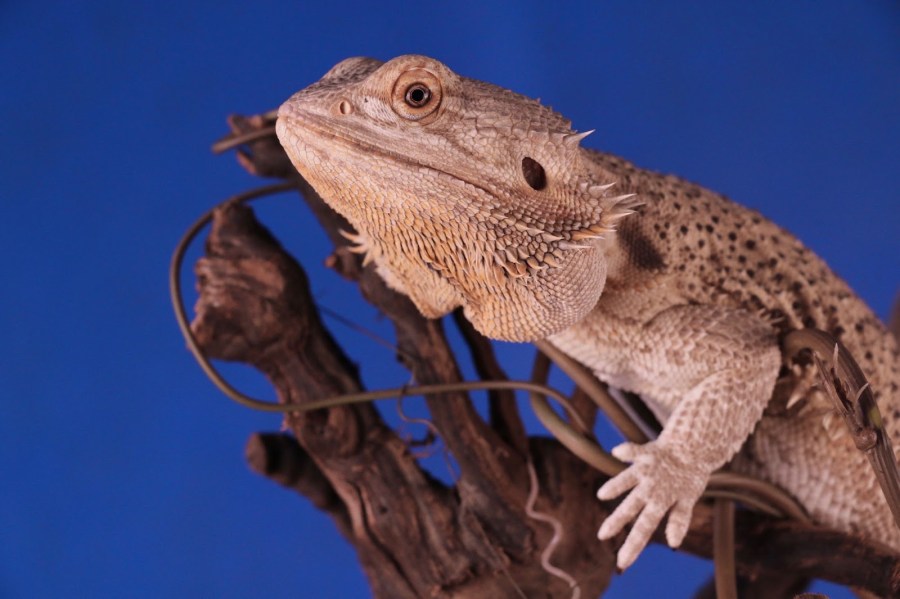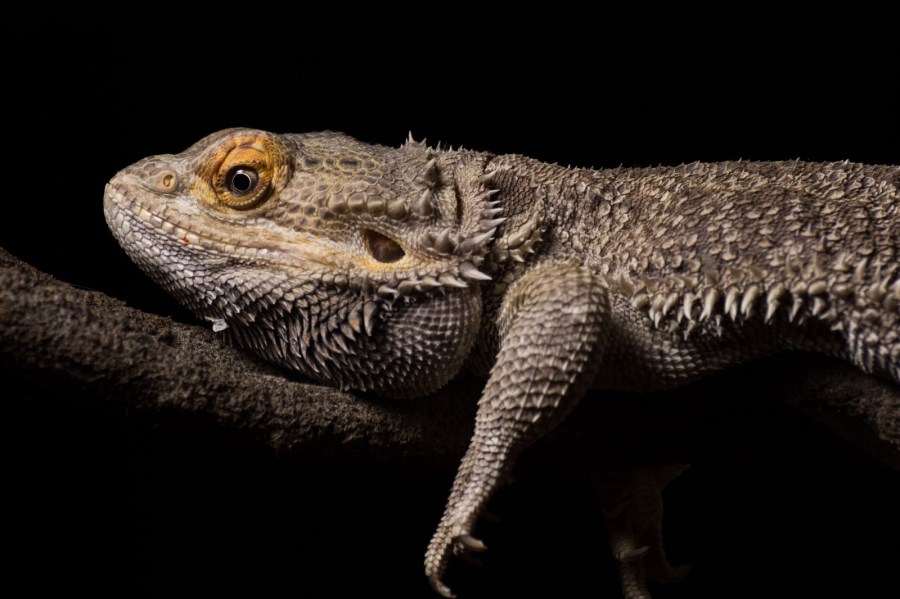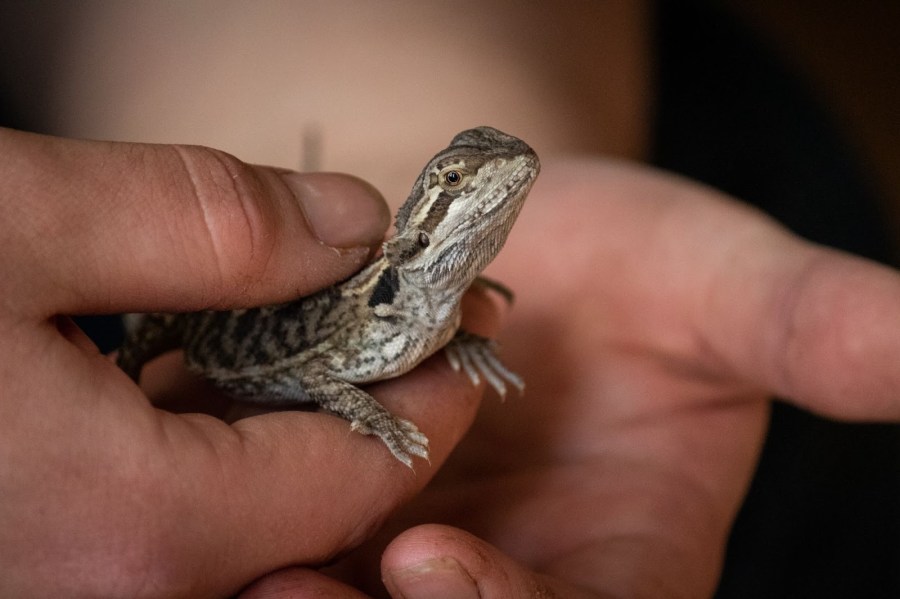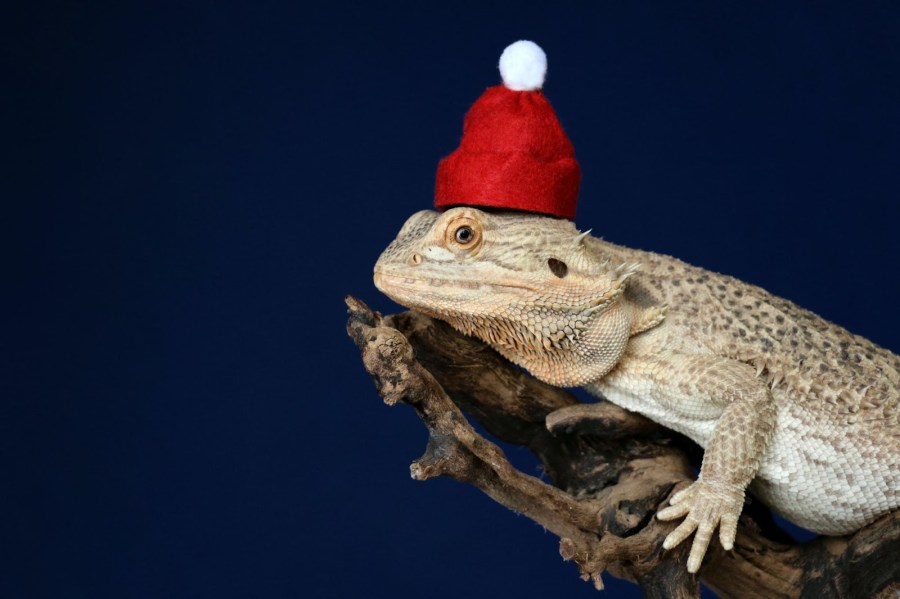Can You Feed a Bearded Dragon Frozen Spinach
Before you decide to add a new lizard companion to your family, you should certainly do your research regarding how large they will get when they reach maturity. Being aware of how large your pet can grow is valuable because it will help you make the right decision about adding one to your family, not to mention you'll be able to prepare a suitable environment.
Bearded dragons, or "Beardies" as they are commonly referred to, are fabulous creatures with a vibrant personality and a fun appearance. There's a lot to learn about them, and we encourage you to dive into your research before you bring yours home so that you are prepared.
Today, we're going to talk about how big a bearded dragon can get. First, we'll start by providing you with some background information on this species of lizard. Then, we'll answer the question: do bearded dragons make good pets? (Spoiler: the answer is a resounding yes.)
From there, we'll dig into how big bearded dragons get and what influences their size. Get ready: you'll be an expert on all things bearded dragon growth-related by the end of this article!
What Is a Bearded Dragon?

Despite being called a "dragon," Beardies are actually a type of lizard. They're one of the most popular pet reptiles, so you likely know at least one person that has a bearded dragon.
Still, it certainly makes sense why bearded dragons were awarded their name. Similar to a dragon, you'll notice that a Beardie has spiny reptilian scales, including a "beard" of spikes adorning the area underneath their skin. This can actually puff up depending on their mood.
When in the wild, you'll find bearded dragons across the majority of Australia. They usually prefer to stay in warm, arid areas such as subtropical woodland, savannas, shrublands, or even deserts.
There are eight different species of bearded dragons that are recognized today, and while there certainly is some variation among these, there are also plenty of similarities. The central bearded dragon is the species that is usually kept as a pet.
Bearded Dragon Fast Facts
Now, let's run through some fast facts about bearded dragons. Their scientific name is Pogona, and they're reptiles, as we mentioned. Your Beardie is an omnivore, and their average life expectancy is four to ten years. These animals are known for being inquisitive, gentle, and active during the daytime.
As for the bearded dragon's habitat, you'll notice that they need a warm place to stay. This is crucial for bearded dragons' health and wellness. These animals are cold-blooded, and therefore, they rely on external heat sources to increase their body temperature.
This can vary, as it is connected to the temperature of their environment. You'll also want to be sure you give your pet a place to bask in the sun and allow them to burrow. These are two things that they do in the wild, and it's crucial to allow them this in captivity.
Your bearded dragon is not a picky eater, which means that they'll be able to eat a variety of things. They have strong jaws and are able to clench and crush insects with hard shells–such as beetles. The bearded dragon is an omnivore, which means that they also enjoy leaves, fruit, flowers, and even the occasional small rodent–or lizards.
These creatures are also known for being territorial, and adult bearded dragons could display this to defend their turf from other males, compete for the attention of a female, or even fight for food. Some males could even attack females if the female doesn't act submissively.
We also want to mention the dragon's beard, which is an important tool that lizards use to communicate. If your pet feels threatened, they will open their mouth, raise up their chin, and puff out their beard to make themselves appear larger. This sometimes comes with a hiss. Another way that bearded dragons communicate? By changing the color of their beard, or even bobbing their heads!
Do Bearded Dragons Make Good Pets?

Bearded dragons certainly make outstanding pets. There are several reasons why adding one to your family can prove to be a good idea. That being said, the bearded dragon also isn't the right fit for all families. Therefore, it's important to do your research before you commit to adding one to your home.
Part of the reason why bearded dragons are such popular pets is because of how docile they are. This makes them remarkably easy to handle–more than a lot of other reptiles. Of course, we'll note that you should be mindful of how much time you spend handling, especially when you begin training your pet.
The younger bearded dragons might become anxious if they're held for an extended period of time. Instead, the best way to do it is to handle them for shorter durations of time. This will help your pet develop trust in you. Once they become more relaxed, you can start to extend the amount of time that you hold them. It's important to start small and gradually increase time increments.
Like any pet, before you commit to getting a Beardie, be sure that you will be able to give them the care and attention that they need for the entirety of their lifespan. Pet ownership can be quite expensive, so be sure it is financially feasible, too!
How Big Do Bearded Dragons Get?

When fully grown, your bearded dragon will typically range from 16 to 24 inches. In addition to this, they will weigh approximately ten to 18 ounces. The bearded dragon reaches the entire size after they reach sexual maturity. While this varies depending on your individual lizard, most fall somewhere between eight and 18 months of age.
After your Beardie turns a year old, their growth rate will slow a significant amount. Typically around this age, an adult will have a thick tail base and a filled-out stomach. If your bearded dragon is larger than 24 inches, then you likely have an uncommon morph that is referred to as the German Giant. These dragons can grow to be up to 32 inches long and weigh up to 1,000 grams (a little over two pounds).
Baby Beardies have an accelerated growth phase. This means that their size will increase quickly. They can jump from three to 11 inches within the first three months. You can also expect them to grow approximately two inches per month. In addition, they will gain approximately ten to 50 grams every month. Once they've surpassed three months of age, your Beardie will grow at a slightly reduced rate.
The Juvenile bearded dragon will grow approximately 1.00 to 1.5" per month. They'll also gain 50 grams. You should also keep an eye out for shedding. While your bearded dragon is in their rapid growth phase, they can shed up to twice a month. After a year, their size growth rate slows. Instead, they'll begin to just shed once or twice a year.
What Influences the Size of a Bearded Dragon?

There are several factors that can influence the size of a bearded dragon. The first is genetics. Genetics actually play a sizable role in the maximum size your pet can grow to be. Your bearded dragon's size is influenced by how large their parents were.
In addition, gender can also have an impact. While bearded dragons are sexually dimorphic, it's subtler to notice than it is with most pet lizards. You can figure out your pet's gender by looking at their femoral pores, the bumps on their tail ventral region, and their physical size. Another way? To ask the breeder you got them from. Females usually range from 16 to 19 inches long, and males are usually larger.
Diet can also play a part in what makes your bearded dragon the size they are. Be sure to avoid feeding your pet low-nutrient foods. This can actually stunt your pet's growth. In addition, you should be sure to avoid feeding them high-fact insects with improperly balanced nutrients. If you need more advice on how to feed, reach out to a trusted vet.
Your bearded dragon's size can also be impacted by how large or small their enclosure is. The general care that you provide them also can help or hurt their growth, so be sure you're following care instructions to ensure that your lizard grows at their full potential.
A Full Beard

That's it! Now you have a robust understanding of how large your pet bearded dragon can get. We know that you'll enjoy adding one to your family–just be sure to provide them the care they require, and they'll make an excellent friend.
Of course, if you ever have any questions about how large your individual bearded dragon is going to be, or if you're noticing that they're not growing, you should reach out to your veterinarian. Someone with an understanding of your particular pet will be able to provide insight on what you can do to help boost growth. Good luck!
SOURCES:
Bearded dragons: facts and photos | National Geographic
How Big Do Bearded Dragons Get? Size and Growth Chart | Everything Reptiles
Pros & Cons of Owning a Bearded Dragon | Pets on Mom
Source: https://www.reference.com/pets-animals/how-big-do-bearded-dragons-get?utm_content=params%3Ao%3D740005%26ad%3DdirN%26qo%3DserpIndex&ueid=81935a2f-5d1b-4734-b769-9295b59bcddb
0 Response to "Can You Feed a Bearded Dragon Frozen Spinach"
Publicar un comentario